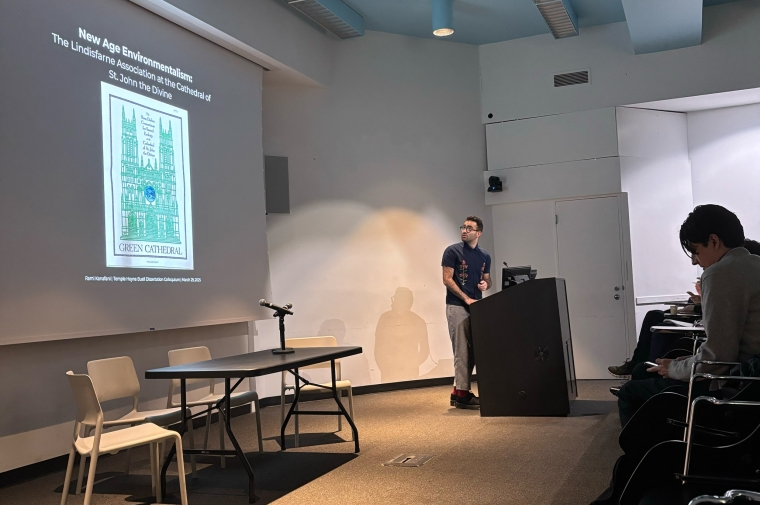September 17, 2024
PhD Architecture graduate group faculty Dr. Dorit Aviv, Heat Islands and the Thermal Lab. Extract from “Testing a novel, community-driven response to heat islands in Philadelphia" by Erica Moser
By Erica Moser

Penn researchers worked with North10, a nonprofit in North Philadelphia, to bring a prototype cooling shelter to Hunting Park one day in August, an opportunity for community members to provide feedback and learn about the health impacts of heat. (Image: Ji Yoon Bae)
Close
Penn researchers worked with North10, a nonprofit in North Philadelphia, to bring a prototype cooling shelter to Hunting Park one day in August, an opportunity for community members to provide feedback and learn about the health impacts of heat. (Image: Ji Yoon Bae)
Graduate students Shuo-Hsuan (Wayne) Chang, Ji Yoon Bae, and Hanzhong Luo work on the Tenopy shelter in Dorit Aviv’s fabrication workshop at Pennovation.
The solar-powered Tenopy shelter provides cooling through shade, a bench with a conductive cooling surface, and radiant cooling panels. (Image: Thermal Architecture Lab)
An infrared camera shows Shuo-Hsuan (Wayne) Chang on the Tenopy bench, and the cooling pipes embedded in the bench, which cannot be seen with a naked eye. It also shows that the person’s skin temperature (around 33° Celsius) is much higher than that achieved by the surface of the bench through the cooling effect (20-22°). The cooled surface of the bench removes heat from the skin through conduction. (Image: Courtesy of Dorit Aviv)

 View Slideshow
View Slideshow



